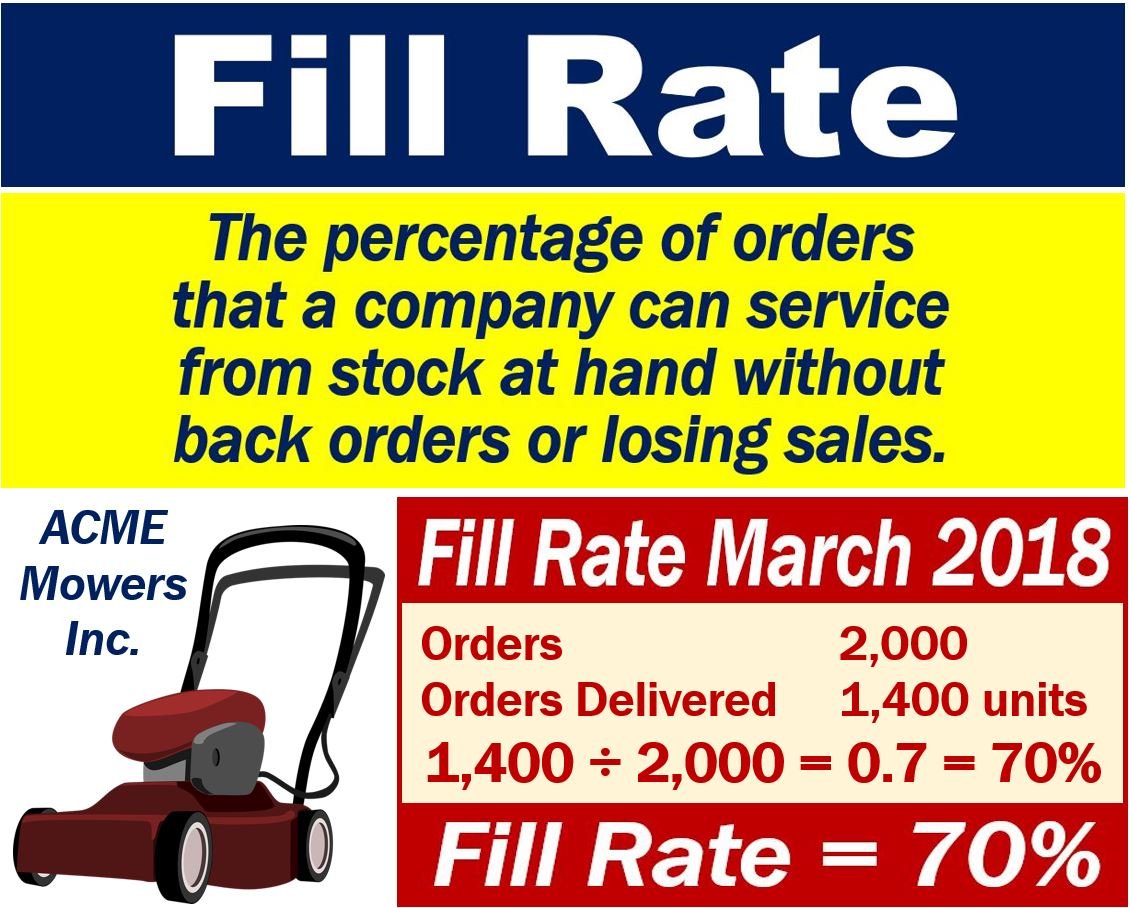Fill Rate is the proportion of customer orders that a company’s stock at hand can satisfy without back orders. Back orders are orders for a product which is temporarily out of stock. Fill rate is the fraction of consumer demand that current stocks can meet without losing sales. We can also express this figure as a percentage of total orders.
An optimal fill rate is crucial for maintaining customer satisfaction and ensuring timely delivery.
We measure a product’s fill rate by averaging the number of orders that the company serviced over the total orders.
Put simply; the rate reflects the likelihood that a supplier will accurately service its customers. It tells us how well a company can meet customers’ needs at any given time.

Aim for 100% fill rate
A company’s fill rate is an important metric. It is important because it influences a supplier’s relationship with its customers.
The rate determines how much they can trust the supplier. It also determines whether customers decide to buy from one company rather than another.
If you are serious about being the marketplace’s leader you should aim for 100% rate. In this context, the ‘marketplace’ means the same as the ‘market’ in its abstract sense.
Fill rate affects cash flow
The percentage of orders that you can deliver from available stock affects other parts of your business.
For example, did you know it can affect your cash flow? You are not going to get any cash from your customers until they receive their order.
Cash flow is the flow of money coming in and leaving a company.
Calculating fill rates
Calculating your rate is simple. You divide the number of products you have delivered by the total number of orders. In other words, divide your product’s supply by the demand for it.
For example, let’s imagine you have a company that sells lawnmowers. If a retailer orders fifty lawnmowers, but you can only ship thirty of them, your fill order rate is:
30 ÷ 50 = 0.6 = 60%
Therefore, your fill rate is 60%
This example, however, is just for one order. You can do the same for all your orders over a specific period.
For example, let’s suppose you received orders for 2,000 lawnmowers in March, and you delivered 1,400 of them. Your fill order rate would have been:
1,400 ÷ 2,000 = 0.7 = 70%
Your fill rate in March was 70%
Just-in-Time
Many companies today have done away with large stocks. They follow a system we call ‘Just-in-Time.’
These companies have virtually no stocks and rely on the prompt deliveries of raw materials and components.
This approach minimizes waste and reduces costs associated with holding inventory, making the ‘Just-in-Time’ system a strategic tool for improving fill rates.
Most Japanese car companies use a ‘Just-in-Time’ system.
“Fill Rate” in Context
Below you can see some sentences that contain the term “fill rate,” illustrating how it is used in various contexts:
- “To maintain a competitive edge, we constantly monitor our fill rates to ensure that we are meeting customer demand efficiently.”
- “During the quarterly review, the logistics manager reported a significant improvement in fill rates, directly correlating with increased customer satisfaction scores.”
- “The new inventory system aims to boost our fill rates by optimizing stock levels based on predictive analytics.”
- “Our goal is to achieve a 95% fill rate across all product lines by the end of the fiscal year.”
- “One of the key performance indicators for our supply chain team is the fill rate, as it reflects how well we’re able to meet immediate market needs.”
- “Despite the disruptions in the supply chain, we managed to maintain our fill rates at a level that ensured no loss of service to our customers.”
